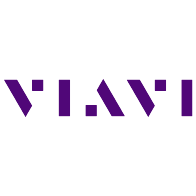Designing Next Generation FWA Antennas
Designing the Next Generation of Fixed Wireless Access Antennas for 4G and 5G Connectivity
Link to full Insight Article here
Sponsored by Poynting Antennas
As 4G and 5G networks extend deeper into urban, suburban and rural regions, advanced Fixed Wireless Access (FWA) antennas are redefining how broadband is delivered. This article explores the research, design, and testing processes that enable robust FWA performance from 617 MHz to 7200 MHz.
A Changing Connectivity Landscape
The demand for reliable broadband has never been greater. From remote work and digital education to IoT-enabled agriculture and industry, the global reliance on high-capacity wireless networks continues to accelerate. Yet, in many regions, fibre and copper infrastructure remain economically unfeasible or physically impractical. Fixed Wireless Access (FWA) bridges this gap—delivering broadband via radio links instead of cables. Its success, however, depends heavily on one component often taken for granted: the antenna system. The performance, design, and efficiency of these antennas determine how effectively FWA can serve both dense urban environments and isolated rural communities.
Research: Understanding Market and Spectrum Realities
Before design begins, FWA antenna development must start with research—mapping real-world deployment needs, available spectrum, and cost-to-performance trade-offs. At the lower end of the spectrum (617 MHz–960 MHz), extended coverage and better building penetration are achievable—ideal for rural connectivity where tower spacing is large. Higher frequency bands (up to 7200 MHz) offer higher data capacity and reduced latency for suburban and urban use cases. This balance between coverage and throughput defines the architectural decisions behind every new generation of FWA antennas. Emerging markets demand cost-effective outdoor antennas that enhance existing router performance, reduce cable losses, and maintain consistent throughput in variable weather conditions. Urban regions, meanwhile, prioritize compact, aesthetically neutral designs with precise directional control to avoid interference.
Design: From Concept to Electromagnetic Reality
The design phase converts these needs into practical engineering outcomes. It starts with concept development—selecting antenna types suited for FWA environments, such as omni-directional units for broad coverage and directional or sector antennas for high-throughput links. Modern antenna design leverages advanced electromagnetic simulation tools that predict performance under realistic conditions. These simulations assess parameters such as radiation pattern, impedance matching, and beamwidth. Materials are chosen not only for RF efficiency but also for resilience—UV-stabilized plastics, corrosion-resistant metals, and weatherproof sealing enable long-term outdoor operation.
Wireless Theory: Why Antenna Design Matters
Wireless communication relies on electromagnetic waves carrying data from transmitter to receiver. Modulation schemes like Quadrature Amplitude Modulation (QAM) embed information into the carrier wave by varying both amplitude and phase, allowing multiple bits per symbol. Even under perfect conditions, a signal weakens as it travels—a phenomenon known as Free Space Path Loss (FSPL). FSPL increases with both distance and frequency, meaning higher-frequency 5G links require more precise antenna gain and alignment to maintain stable connections. Effective FWA design compensates for FSPL through optimized gain, beam shaping, and careful alignment between transmitting and receiving antennas.
Simulation and Iteration: The Digital Testing Ground
Sophisticated 3D electromagnetic solvers now make it possible to simulate antenna behavior long before fabrication. By testing multiple prototypes virtually, engineers can iteratively refine parameters such as impedance bandwidth, isolation between ports, and overall radiation efficiency. The result is an antenna optimized not only for maximum gain but also for stability across frequency bands and operating environments. This virtual testing phase shortens development cycles and reduces costly physical re-spins.
Designing Next Generation FWA Antennas

